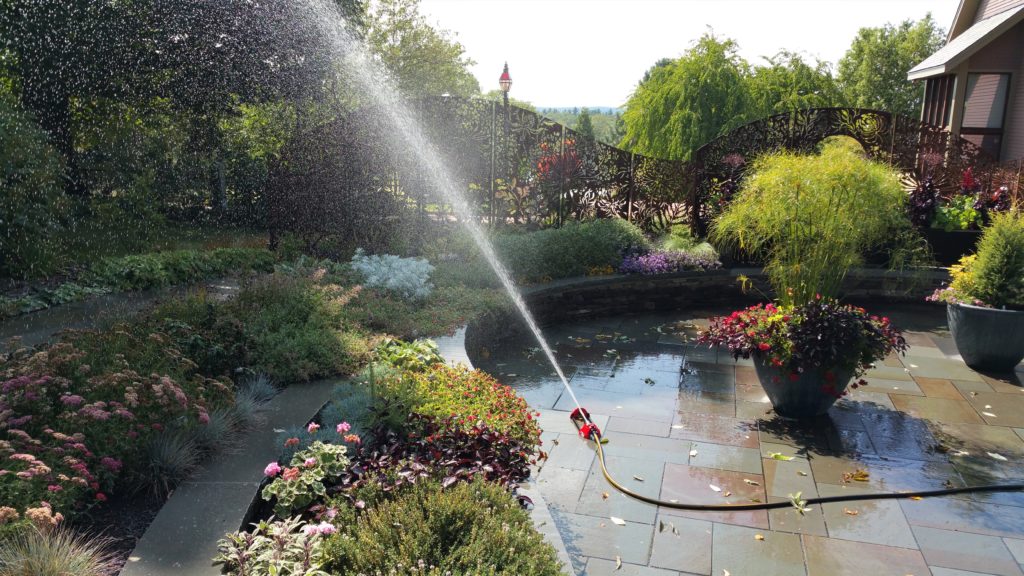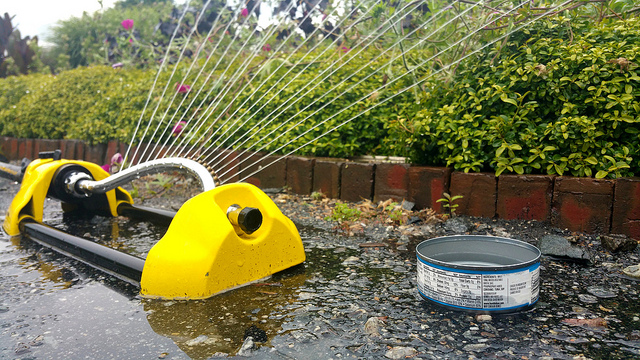By Robert Burgess
New England Botanic Garden at Tower Hill staff
Rain and gardeners have a tricky relationship. Too much or too little precipitation can spell difficulty in the garden. Beachgoers have seen plenty of blue skies this summer, while gardeners and farmers wouldn’t mind a soaking rain or two each week.
After a rainy and cool spring that delayed many New England gardens but replenished depleted aquifers, it has been a dry summer for many of us gardeners. This presents challenges: towns with water ban limitations; the rising costs to the town water department for running hoses; tapping into well water supplies without the equivalent refills; time siphoned away from other activities to attend to a garden hose.
The Horticulture staff at New England Botanic Garden at Tower Hill advises gardeners to measure rain fall and look for about an inch per week as the ideal. This can be accomplished as simply as putting an empty tuna fish can outside and seeing how much it fills up. When gardens are receiving an inch of rain each week, you can lay off the supplemental watering of most of the plants that call their yards homes. Exceptions include newly transplanted plants, and trees and shrubs planted earlier this season. If dry conditions continue you might need to water tress and shrubs added during the 2016 growing season. In addition, gardens planted in well-drained or sandy soils, or moisture-loving plants, might require additional moisture.
Central Massachusetts hasn’t had a full day of rain since June 6. Worcester received just 2.29 inches of rain in July and 1.3 inches in August, with little or nothing forecast over the next 10 days.
In my garden at home, I water trees and shrubs I planted this spring (birch, chokeberry, serviceberry, ragusa rose, wild raisin, crab apple, etc.) once a week – they get three gallons each from my watering can as they establish their root systems. My vegetable garden has soaker hoses throughout and those get turned on once a week if my tuna can doesn’t overflow. My lawn, ornamental trees, and established perennials do without because of a town ordinance that bans watering of non-edibles most summers.
U.S. Drought Monitor Northeast Module
The U.S. Drought Monitor shows how the lack of rain is affecting the region. The first warning level – abnormally dry – has appeared over southeastern Massachusetts in recent weeks. While coastal New Hampshire and Maine see the next level up – moderate drought – creeping in. It’s nothing like what the region saw last year, when extreme drought blanketed much of New England as farmers saw crops dry up, and gardeners started googling “drought resistant plants” much more often.
And yet I feel guilt wishing for precipitation as parts of Texas are suffer flooding from Hurricane Harvey. If only New England could siphon away some of that water and put it to good use.
Robert Burgess is the public relations manager at New England Botanic Garden at Tower Hill and a suburban homesteader.



